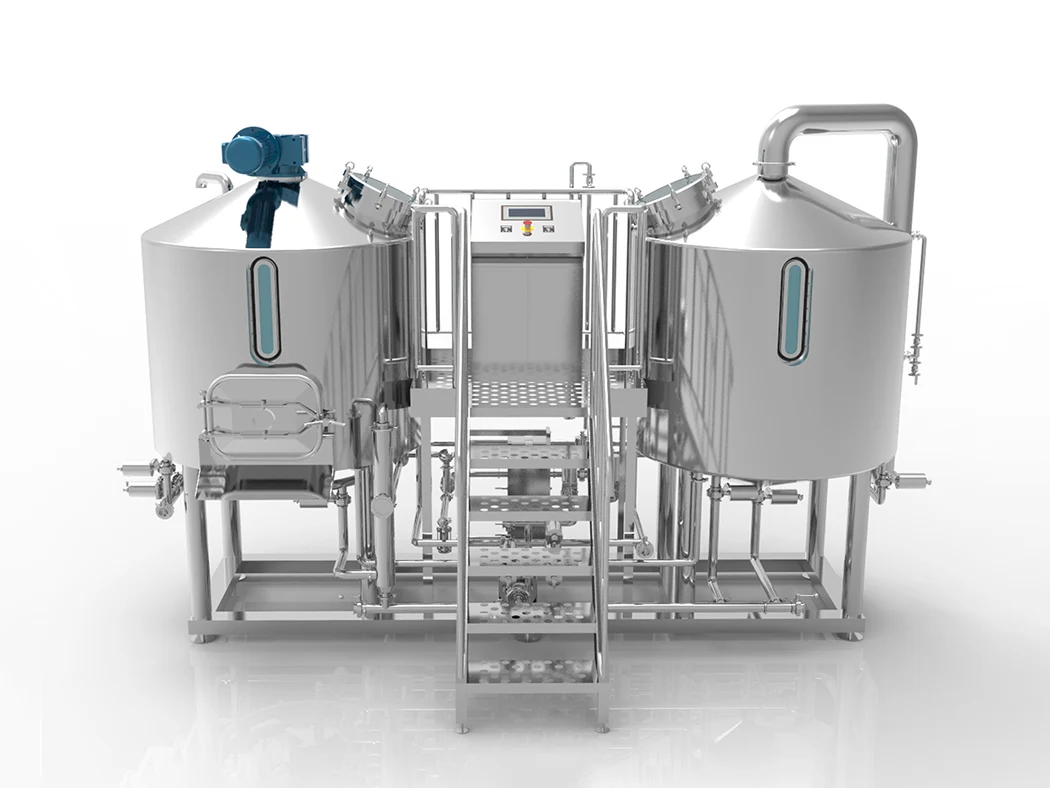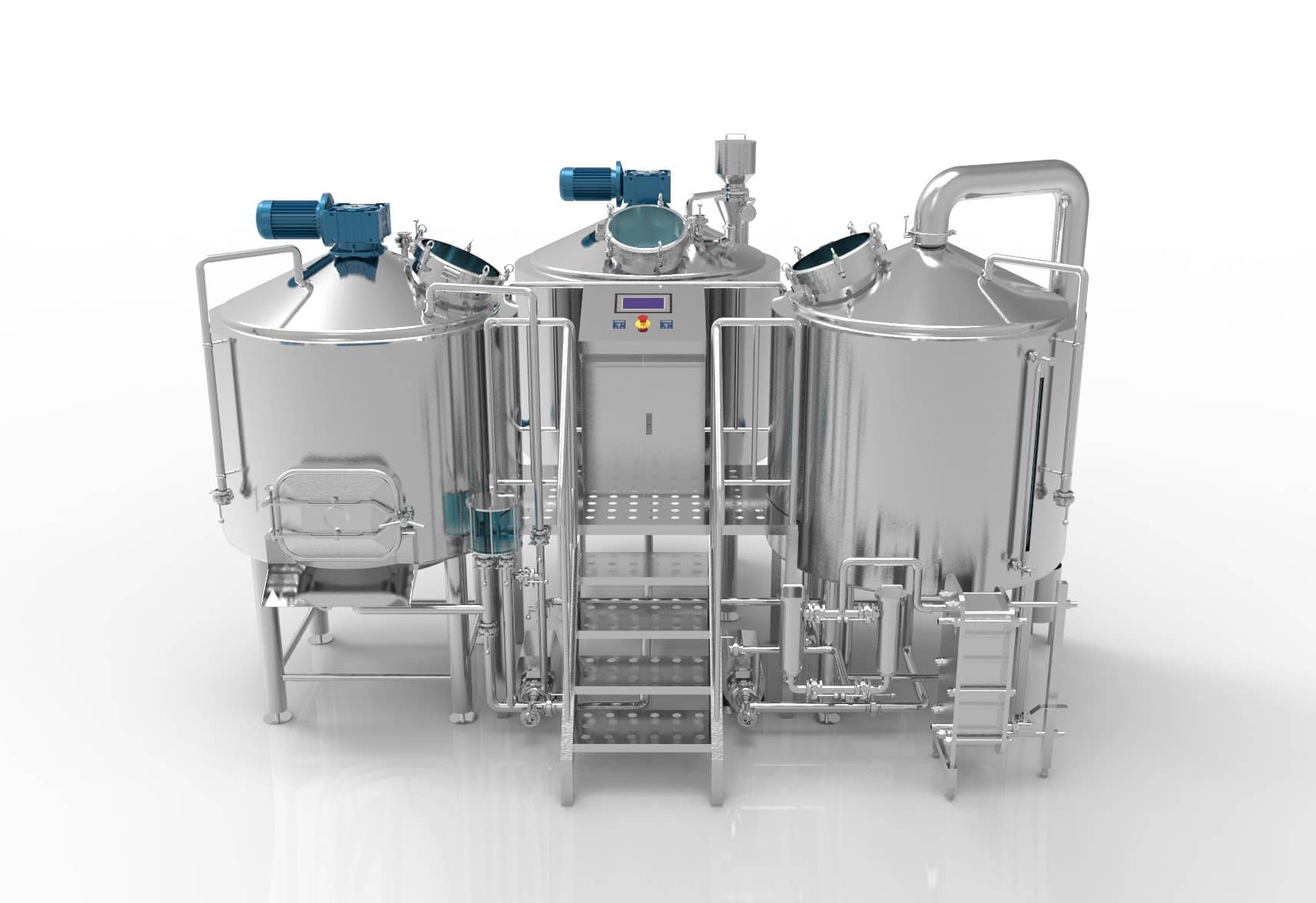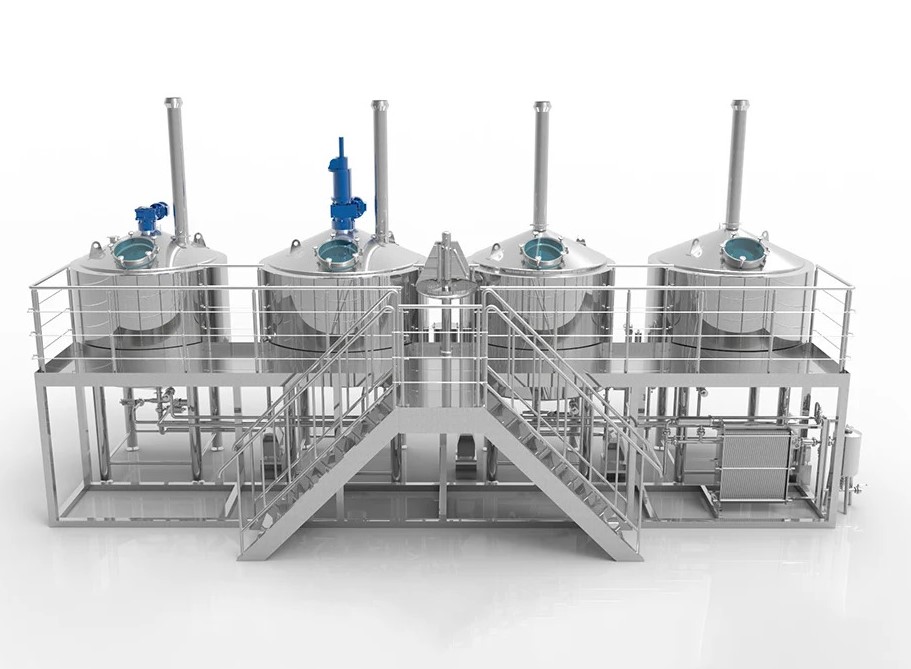La fermentación es un paso fundamental en el proceso de elaboración de la cerveza, y la fermentador es el equipo básico que determina la calidad del producto final. Elegir el fermentador adecuado puede afectar no sólo a la eficacia de la levadura, sino también al sabor, la claridad y el gusto general de la cerveza. En la actualidad, los materiales más comunes para los fermentadores son el acero inoxidable, el vidrio y el plástico. Cada material tiene sus ventajas e inconvenientes y es adecuado para cerveceros de distintos tamaños y necesidades.
Un fermentador es un recipiente especial utilizado para contener el mosto y promover la fermentación de la levadura durante el proceso de elaboración de la cerveza. En el fermentador, la levadura convierte el azúcar del mosto en alcohol y dióxido de carbono, al tiempo que forma el sabor único de la cerveza.
Los distintos tipos de fermentadores pueden afectar al control de la temperatura, la exposición al oxígeno, la separación de los sedimentos y otros factores del proceso de fermentación, determinando así la calidad final de la cerveza. Por lo tanto, elegir el fermentador adecuado es crucial para el éxito de la elaboración de la cerveza. El material, el sellado, el sistema de ventilación y el método de refrigeración del fermentador afectarán al proceso de fermentación, por lo que elegir el fermentador adecuado es crucial para la calidad de la cerveza.
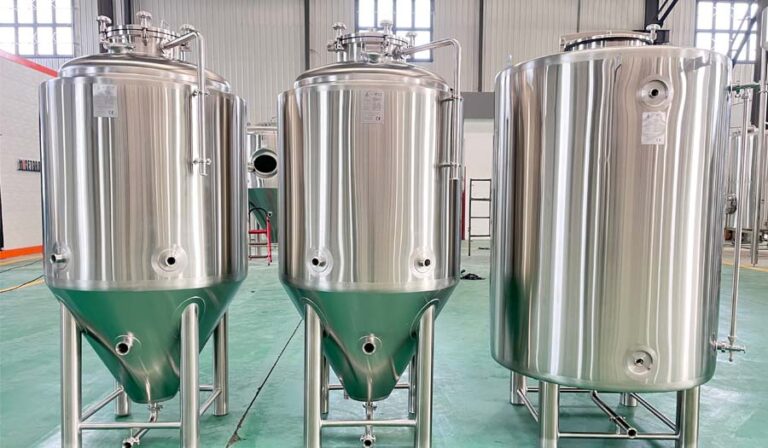
Los tanques de fermentación son de plástico
Depósitos de fermentación de plástico
Los tanques de fermentación de plástico suelen estar hechos de polietileno de calidad alimentaria, que es ligero y asequible. Son una gran opción para los principiantes, pero pueden ser propensos a los arañazos y a la proliferación de bacterias con el tiempo. Aunque son fáciles de limpiar, absorben olores y sabores, lo que los hace menos adecuados para un uso prolongado.
Depósitos de fermentación de cristal
Los tanques de fermentación de vidrio son preferibles por sus propiedades no porosas, que los hacen resistentes a las manchas, los arañazos y la absorción de olores. Sin embargo, son más pesados y frágiles que los de plástico y deben manipularse con cuidado. Los tanques de fermentación de vidrio son perfectos para quienes valoran la limpieza y la conservación del sabor.
Depósitos de fermentación de acero inoxidable
Los depósitos de fermentación de acero inoxidable son el estándar de oro para la vinificación. Son duraderos, fáciles de limpiar y resistentes a arañazos y manchas. Estos depósitos de fermentación mantienen una estética profesional y se utilizan a menudo en la vinificación comercial. Aunque son más caros que los depósitos de fermentación de plástico o cristal, ofrecen un valor a largo plazo y una fiabilidad inigualable.
Tipos de tanques de fermentación
Clasificación por método de fermentación
- Cubas de fermentación abiertas: Los tanques de fermentación abiertos son recipientes de fermentación con la parte superior abierta, lo que permite que la levadura esté expuesta directamente al aire durante la fermentación. Este método de fermentación es habitual en la producción de las tradicionales cervezas Ale inglesas y de estilo belga, que pueden favorecer el contacto total de la levadura con el oxígeno del ambiente, afectando así al desarrollo del sabor de la cerveza. Al carecer de cierre hermético, los tanques de fermentación abiertos son más susceptibles a la contaminación por bacterias presentes en el aire, por lo que normalmente deben utilizarse en entornos estrictamente controlados, como instalaciones cerveceras con elevadas normas de higiene.
- Tanques de fermentación cerrados: Los tanques de fermentación cerrados utilizan una estructura sellada, que puede aislar eficazmente el aire exterior durante el proceso de fermentación al tiempo que controla la liberación de dióxido de carbono a través de una válvula de gas. Este tipo de tanque de fermentación es adecuado para la elaboración moderna de cerveza artesanal e industrial, especialmente la producción de lager y muchas ales. El entorno cerrado ayuda a reducir el riesgo de oxidación, al tiempo que mantiene la estabilidad de la fermentación y garantiza la consistencia del sabor de la cerveza. Los tanques de fermentación cerrados suelen estar equipados con puertos de muestreo y sistemas de control de la temperatura, lo que permite a los cerveceros ajustar con precisión las condiciones de fermentación.
Clasificación por forma y estructura
- Cilíndrico-cónico tanques de fermentación: La característica de diseño de los tanques de fermentación cilíndrico-cónicos es que el fondo es cónico, lo que facilita la sedimentación natural de la levadura y los sedimentos. Esta estructura permite a los cerveceros separar fácilmente la levadura tras la fermentación sin afectar al líquido de cerveza claro de la capa superior, por lo que es muy común en la elaboración de cerveza comercial. El diseño cónico también permite la recuperación de la levadura, lo que aumenta la tasa de reutilización de la levadura y reduce los costes de elaboración de la cerveza. Este tipo de fermentador se utiliza mucho en cervecerías medianas y grandes, así como en cervecerías caseras avanzadas.
- Fermentador de barril: Los fermentadores de barril suelen ser de vidrio o plástico, y su aspecto es similar al de los cubos tradicionales, que son adecuados para la elaboración de cerveza casera en pequeños lotes. Este tipo de fermentador es fácil de usar y de pequeño tamaño, por lo que resulta adecuado para que los principiantes realicen fermentaciones experimentales. Los fermentadores de barril de vidrio tienen una buena estabilidad química y no absorben fácilmente las impurezas, mientras que los de plástico son más ligeros pero pueden rayarse con el tiempo, lo que afecta a su uso a largo plazo.
- Fermentador de fondo plano: El fermentador de fondo plano es un recipiente de fermentación sencillo, económico y práctico, que se ve a menudo en la elaboración de cerveza casera o en pequeñas cervecerías. Este tipo de fermentador tiene un diseño sencillo y es fácil de limpiar y manejar, pero debido a la falta de un fondo cónico, el sedimento en la fase posterior de la fermentación requiere una filtración adicional o el trasvase de barriles. Los fermentadores de fondo plano son adecuados para los cerveceros que desean una fermentación de alta calidad a un coste menor, especialmente para producciones pequeñas y medianas.
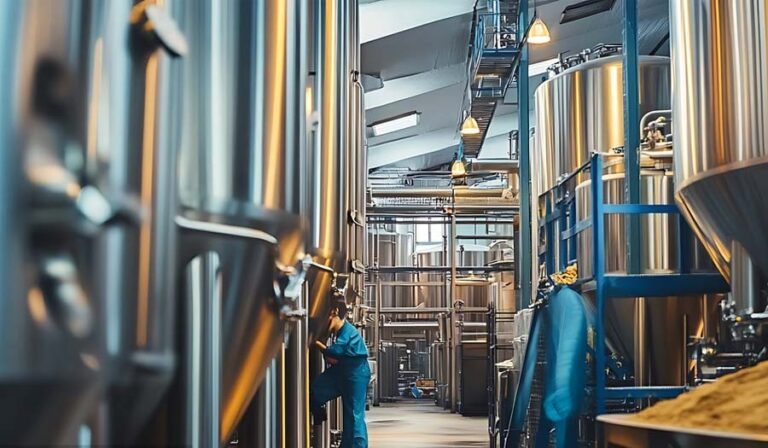
Clasificación por material
- Fermentadores de acero inoxidable: Los fermentadores de acero inoxidable son los preferidos por los cerveceros profesionales por su durabilidad y fácil limpieza. Su superficie lisa facilita la desinfección y previene eficazmente la proliferación de bacterias, al tiempo que soporta altas presiones y cambios de temperatura. El acero inoxidable no afecta al sabor de la cerveza y no se daña fácilmente con el uso prolongado, por lo que se utiliza mucho en la elaboración de cerveza comercial y casera de alta gama.
- Fermentadores de vidrio: Los fermentadores de vidrio se utilizan a menudo para la elaboración casera de cerveza. Su principal ventaja es su gran transparencia, que facilita la observación del proceso de fermentación. El vidrio no absorbe fácilmente olores ni contaminantes y puede mantener un entorno de fermentación relativamente puro. Sin embargo, como el vidrio es pesado y frágil, hay que tener mucho cuidado al manipularlo y limpiarlo. Los fermentadores de vidrio suelen ser adecuados para la elaboración de pequeños lotes, especialmente para los cerveceros que desean controlar con precisión el proceso de fermentación. Es una buena elección.
- Fermentadores de plástico: Los fermentadores de plástico son populares entre los cerveceros principiantes por su ligereza y bajo coste. Son fáciles de manejar y no se rompen con facilidad, por lo que resultan adecuados para un uso a corto plazo o para la elaboración de cerveza experimental. Sin embargo, el plástico se raya con facilidad y su uso prolongado puede generar bacterias. También puede absorber el olor y los residuos de la cerveza, por lo que debe prestarse especial atención a la limpieza y el mantenimiento durante la elaboración de cerveza a largo plazo. Los tanques de fermentación de plástico suelen ser adecuados para cerveceros caseros con presupuestos limitados o para la fermentación de cerveza que no se almacena durante mucho tiempo.
Comparación de recipientes de fermentación: Acero inoxidable frente a vidrio frente a plástico
|
Factores de comparación |
Fermentador de acero inoxidable |
Fermentador de vidrio |
Fermentador de plástico |
|
Durabilidad |
Muy duradero, resistente a la corrosión y resistente |
Frágil, requiere una manipulación y un uso cuidadosos |
Propenso a arañazos, puede deformarse con el tiempo, menor vida útil |
|
Dificultad de limpieza |
Más fácil de limpiar, superficie lisa, sin residuos, se puede limpiar con productos químicos |
Superficie lisa, fácil de limpiar, pero cuello pequeño, requiere cepillos especiales |
Propenso a rayarse, absorbe olores y manchas, puede afectar al sabor de la cerveza con el tiempo |
|
Transparencia |
Opaco, requiere medidor de nivel de líquido o muestreo para controlar la fermentación |
Totalmente transparente, permite la observación directa de la fermentación |
Semitransparente u opaco, no es fácil de observar |
|
Control de la oxidación |
Excelente hermeticidad, reduce la oxidación, ideal para fermentaciones largas |
La estanqueidad al aire es moderada, un sellado incorrecto puede provocar oxidación |
Mala hermeticidad, propensa a la oxidación, afecta al sabor de la cerveza |
|
Control de la temperatura |
Puede equiparse con sistemas de refrigeración, control preciso de la temperatura |
Depende de la temperatura ambiente, capacidad limitada de control de la temperatura |
Muy influenciado por la temperatura ambiente, difícil de controlar |
|
Peso |
Más pesado, requiere ayuda para moverse |
Pesado y frágil, requiere un manejo cuidadoso |
Más ligero, fácil de mover y guardar |
|
Uso adecuado |
Elaboración de cerveza comercial, cerveceros caseros avanzados, ideal para un control preciso de la fermentación |
Homebrewers, adecuado para la producción de pequeños lotes, ideal para observar la fermentación |
Cerveceros caseros principiantes, apto para fermentaciones de corta duración o cerveceros con poco presupuesto |
|
Precio |
Es el más caro, pero ofrece una alta rentabilidad a lo largo del tiempo |
Moderado, adecuado para la elaboración casera de pequeños lotes |
El más barato, ideal para principiantes |
|
Lo mejor para |
Cerveceros profesionales, cerveceros caseros avanzados |
Cerveceros caseros, cerveceros intermedios |
Principiantes, cerveceros con poco presupuesto |
Tanques de fermentación de cerveza para elaboración casera frente a elaboración comercial
Elaboración de cerveza casera
Los cerveceros caseros suelen utilizar fermentadores de menor capacidad, que oscilan entre 1 y 10 galones. Estos fermentadores priorizan la asequibilidad, la facilidad de uso y el tamaño compacto. Los materiales habituales son el plástico y el cristal, y elementos como las esclusas y los grifos simplifican el proceso de elaboración. Para los aficionados, el objetivo es que las cosas sean sencillas y divertidas.
Fabricación comercial de cerveza
En un entorno comercial, los fermentadores deben manejar grandes volúmenes de cerveza, que a menudo superan los cientos o miles de galones. Los fermentadores de acero inoxidable destacan por su durabilidad, escalabilidad y capacidad para integrar funciones avanzadas, como los sistemas de control de temperatura. Los cerveceros comerciales se centran en la eficiencia, la consistencia y el cumplimiento de las demandas de producción.
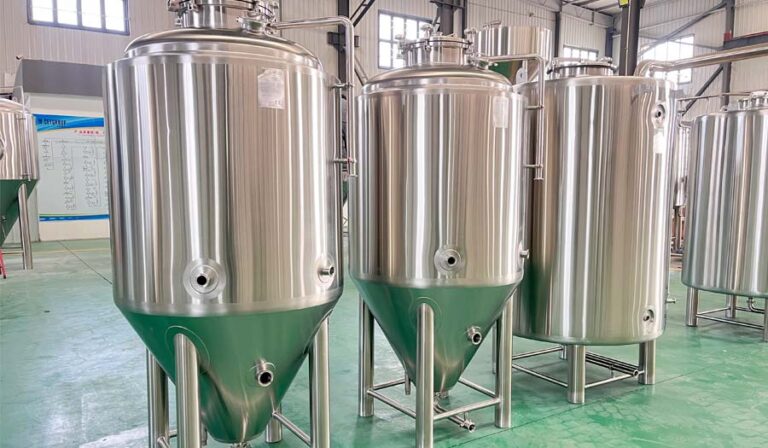
PREGUNTAS FRECUENTES
¿Qué es un fermentador?
Un fermentador es un recipiente utilizado para controlar y supervisar la fermentación durante el proceso de elaboración de la cerveza. Proporciona un entorno sellado para que la levadura descomponga los azúcares y produzca alcohol y dióxido de carbono durante el proceso de fermentación. Los fermentadores suelen tener una tapa sellada, una válvula de escape y un sistema de control de la temperatura para garantizar el buen desarrollo del proceso de fermentación.
¿Cómo debe elegirse la capacidad del fermentador?
La capacidad del fermentador debe determinarse en función de su volumen de elaboración. Los cerveceros caseros suelen elegir fermentadores con un volumen de 20-30 litros, mientras que las cervecerías comerciales suelen utilizar fermentadores más grandes con una capacidad de varios cientos de litros. Para los cerveceros de lotes pequeños, los fermentadores más pequeños pueden evitar el desperdicio y facilitar la gestión.
¿Cómo limpiar el fermentador?
Cuando limpie el fermentador, enjuáguelo primero con agua tibia para eliminar los restos de líquido de cerveza. A continuación, puede utilizar un limpiador especial para equipos de elaboración de cerveza y asegurarse de aclarar bien todos los restos de detergente. Para los fermentadores de acero inoxidable, puede utilizar agua a alta temperatura y desinfectantes para su desinfección. Dado que la boca del fermentador de vidrio es pequeña, tenga cuidado de utilizar un cepillo especial al limpiarlo. En los fermentadores de plástico hay que evitar el uso de cepillos demasiado duros para no rayar la superficie.
¿Cómo evitar la contaminación en los fermentadores?
Para evitar la contaminación, deben seguirse procedimientos estrictos de limpieza y desinfección, especialmente antes de cada uso. Asegúrese de que el fermentador está bien sellado para evitar que los contaminantes del aire entren en el fermentador. Utilice agua, desinfectantes y herramientas estériles, mantenga limpio el equipo y compruebe periódicamente piezas como las válvulas de escape para evitar la oxidación o la contaminación.
¿Cómo afecta el sellado del fermentador al proceso de fermentación?
El sellado del fermentador es crucial para el proceso de fermentación. Un fermentador bien sellado puede impedir eficazmente la entrada de oxígeno, reducir el riesgo de oxidación y garantizar que la levadura fermente normalmente en un entorno libre de oxígeno. Al mismo tiempo, el sellado también puede evitar que el dióxido de carbono se escape, ayudando a que el proceso de fermentación se desarrolle sin problemas.

